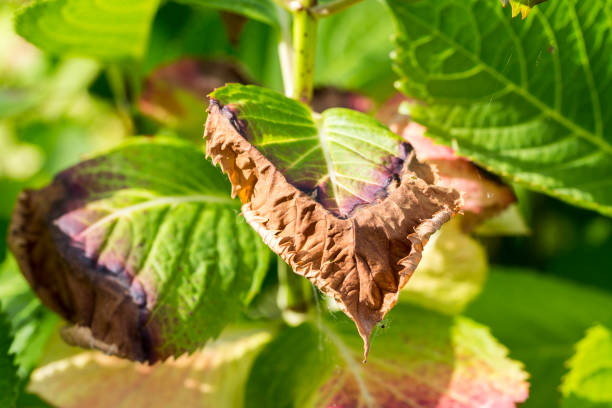9 Simple Techniques For Hydrangea Leaves Turning Yellow
Some Known Details About Hydrangea Leaves Turning Yellow
Table of ContentsThe Basic Principles Of Hydrangea Leaves Turning Yellow What Does Hydrangea Leaves Turning Yellow Mean?Hydrangea Leaves Turning Yellow Things To Know Before You BuyThe Ultimate Guide To Hydrangea Leaves Turning Yellow
These issues are very easy to determine and fix if you take steps before root rot collections in. A moisture meter can assist guide you to the very best technique of modification (Hydrangea Leaves Turning Yellow). Big fallen leaves commonly look sagging during the afternoon heat. When they fall short to cheer up in the evening or still look wilted in the morning, your plant could be overwatered.Eliminate the plant from the dirt and prune out any origins that aren't white and turgid (plump). Replant in a new location or work some sand right into the dirt for better drain.
Include a little bit of distilled water, stir the components, and drain the added water. Put a p, H testing strip in and wait for an analysis.
Sphagnum moss or peat moss protects against the dirt from compacting and betters dirt drainage while likewise elevating the soil's level of acidity. You can scatter sulfur chips in your hydrangea soil.
The Best Guide To Hydrangea Leaves Turning Yellow
This is one excellent reason to repot houseplants routinely (though there are others, such as root growth as an example). It is likewise why houseplants require a much more stringent fertilizing routine than the majority of outside plants. When a hydrangea houseplant is lacking in nutrients, its leaves will be the very first to reveal the indications.

Many liquid fertilizer requires dilution with water to reduce the concentration somewhat. You will additionally need to feed the plant by hand and regular intervals. When springtime starts in March, it's the energetic expanding season for lots of houseplants, consisting of hydrangeas. At this point, you ought to start your feeding regimen. Apply fluid plant food to your hydrangea since this stuff, as I mentioned previously, is fast-releasing.
The dripline is the location located under the foliage that is the furthest away from the center of the plant. Rather than applying feed to the facility of the plant it is best to focus it mostly in the outer areas of the pot. If you 'd rather make use of a slow-release plant food such as granular or spike plant food, after that cover either kind with some dirt after you place them.
Everything about Hydrangea Leaves Turning Yellow

The hydrangea is surprisingly frost-resistant, as soon as temperatures start getting right into the 20s, the plant is in severe risk. If the temperatures remain in the low 10s, that risk is a lot more severe still. Obviously this is even more of an interest in outdoor plants so if you maintain potted hydrangea outside you should bring them find more info inside your home in really cold weather problems or even take into consideration transferring them inside for the duration of the winter season.

A dehydrated hydrangea, A big problem with numerous houseplants is root rot. Root rot happens when you overwater a plant and because it is such a common trouble (specifically with succulents) several houseplant proprietors are frightened of overwatering their plants. Hydrangeas need even more watering that most various other typical houseplants and can end up being dehydrated when they are underwatered.
Facts About Hydrangea Leaves Turning Yellow Uncovered
They require generous amounts of water, yet they likewise dislike to grow in standing water or water drenched soil. Be definitely sure that your hydrangea is dehydrated due to an absence of water and not because of it be provided also much water (more on this later). Understand prior to you get that watering can that an overwatered hydrangea presents the very same signs as an underwatered one! Overwatering is a severe problem if you cut corners on its water requirements also a little bit, your hydrangea will be quick to reveal it.
The very best method to determine if your hydrangea is undersea is to site web check the wetness degrees in the dirt. By utilizing a reliable but low-cost wetness and p, H tester, or by sticking your finger into the dirt, you will swiftly inform if the plant requires water. So, to get your hydrangea watering behaviors on the appropriate track, you require to be mindful regarding the dampness degrees in its dirt.
When you remove your finger from moist dirt it will certainly have small amounts of soil residue adhered to it. Dry dirt will indicate your finger appears clean or with dry soil that is easily blown away. If it's damp, and the plant has yellow fallen leaves then the plant has likely been overwatered and you will require to comply great site with the suggestions offered in the section below.